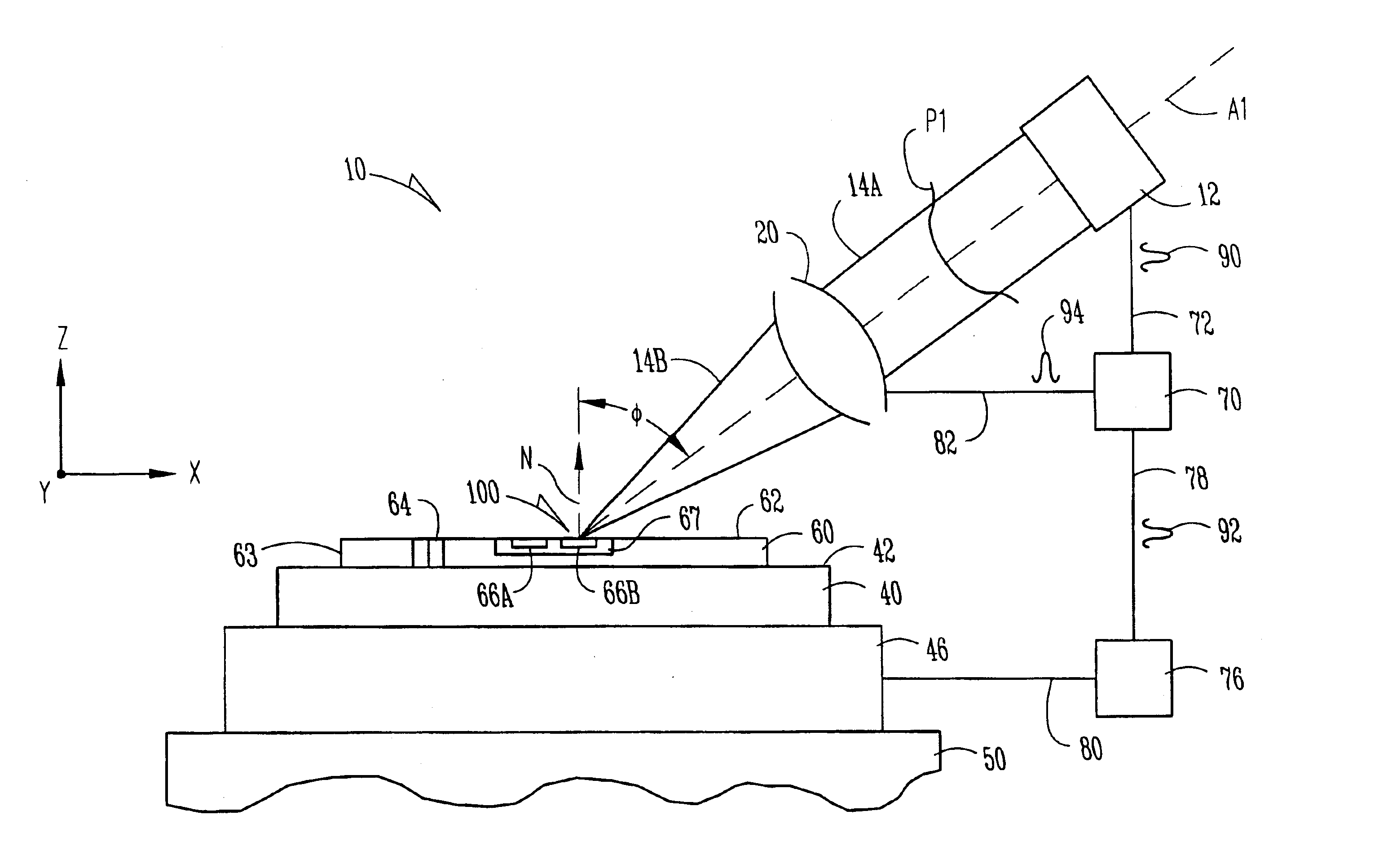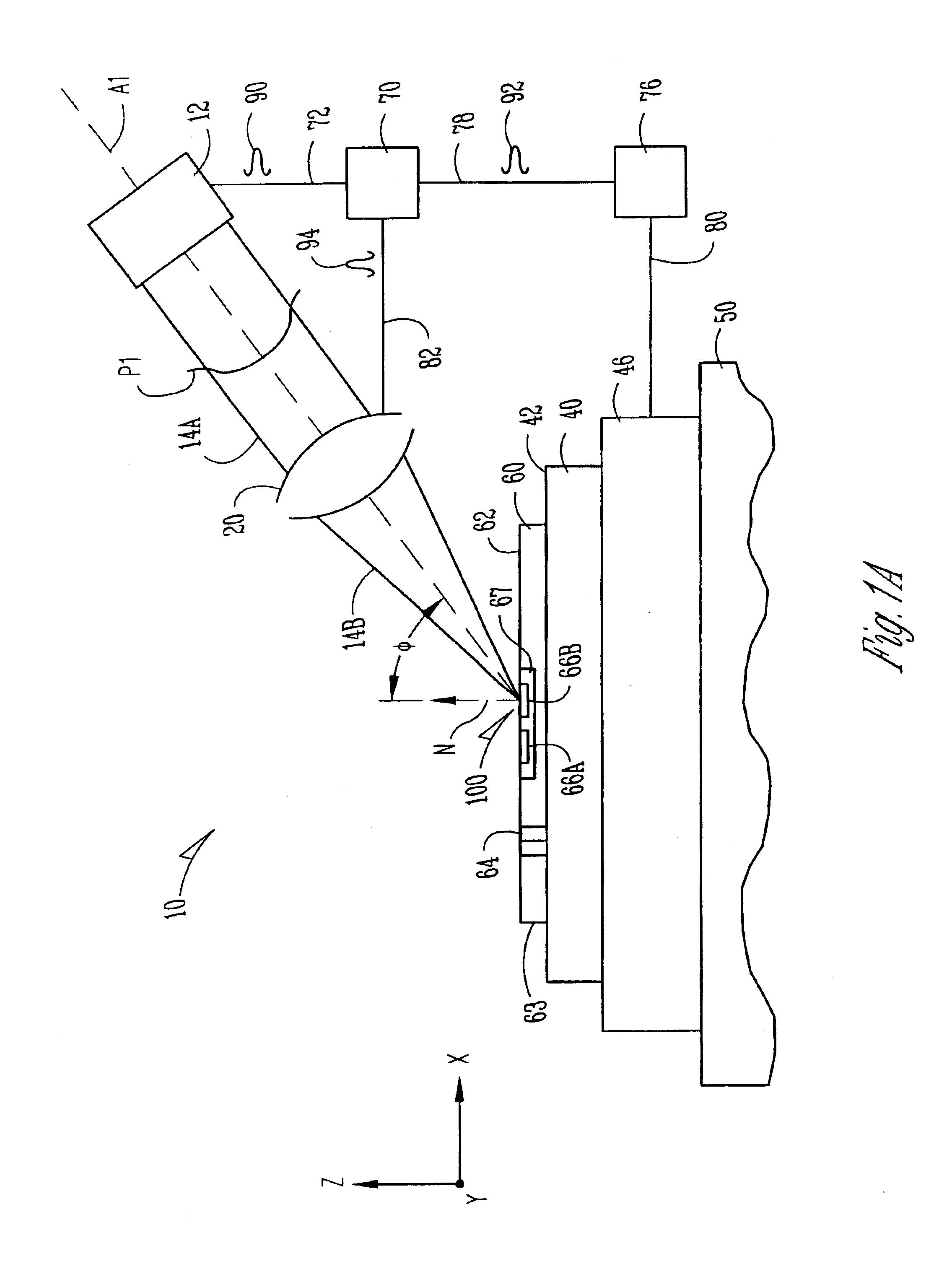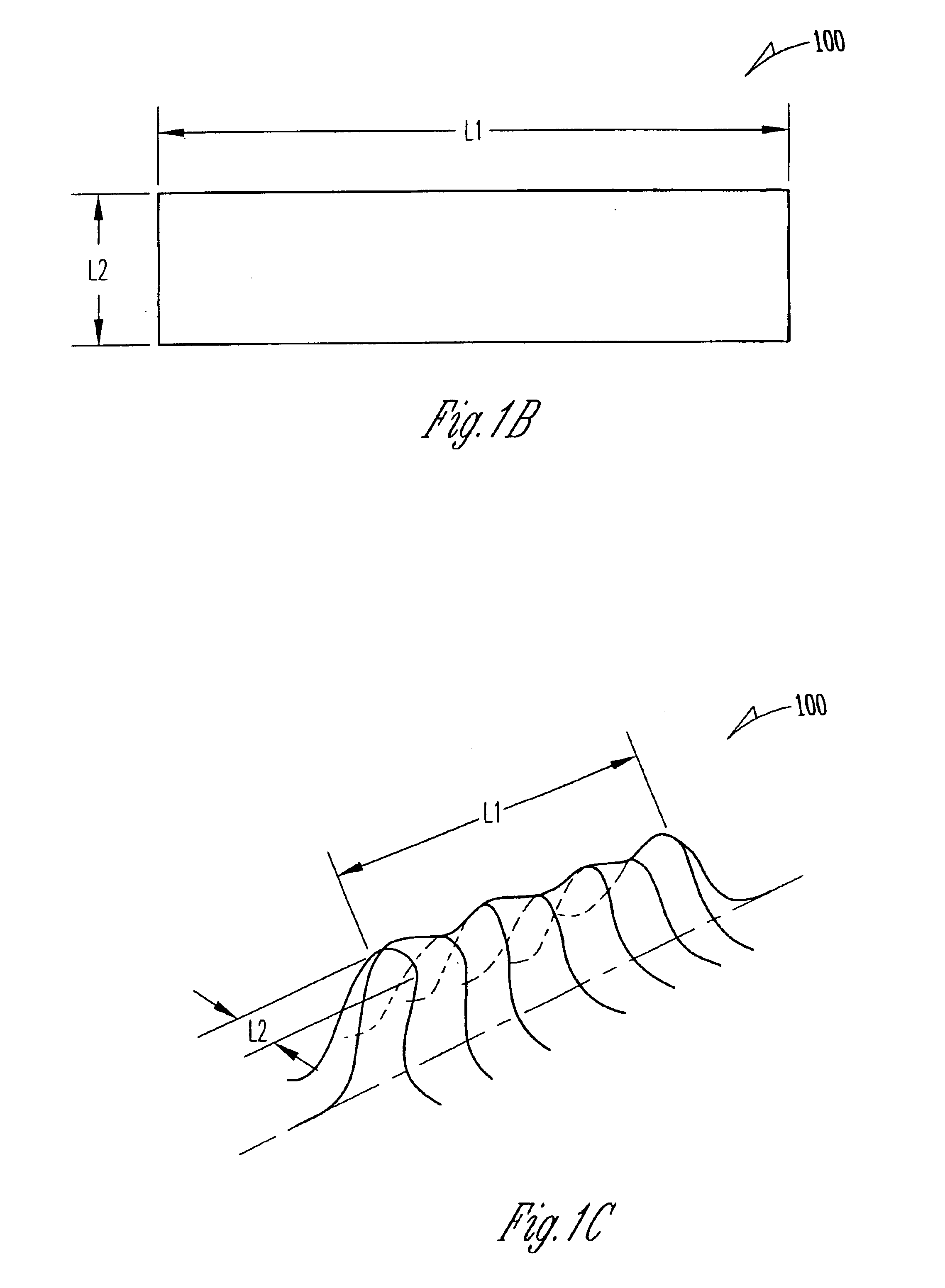Laser scanning apparatus and methods for thermal processing
a scanning apparatus and thermal processing technology, applied in the direction of lasers, metal working apparatus, manufacturing tools, etc., can solve the problems of large laser and associated power supply needed to provide such high energy, substantial temperature variations, and inability to extend laser pulse lengths
- Summary
- Abstract
- Description
- Claims
- Application Information
AI Technical Summary
Benefits of technology
Problems solved by technology
Method used
Image
Examples
Embodiment Construction
FIG. 3 is a schematic diagram of apparatus 10 similar to that of FIG. 1A that further includes a number of additional elements located across the top of the figure and above substrate 60. These additional elements either alone or in various combinations have been included to illustrate additional example embodiments of the present invention. It will be apparent to those skilled in the art how many of the additional elements introduced in FIG. 3 are necessary for the operation to be performed by each of the following example embodiments, and whether the elements discussed in a previous example embodiment is also needed in the embodiment then being discussed. For simplicity, FIG. 3 has been shown to include all of the elements needed for these additional example embodiments since some of these embodiments do build on a previously discussed embodiment. These additional example embodiments are discussed below.
Attenuator
With reference to FIG. 3, in one example embodiment, apparatus 10 in...
PUM
| Property | Measurement | Unit |
|---|---|---|
| wavelength | aaaaa | aaaaa |
| wavelength | aaaaa | aaaaa |
| incident angle | aaaaa | aaaaa |
Abstract
Description
Claims
Application Information
 Login to View More
Login to View More - R&D
- Intellectual Property
- Life Sciences
- Materials
- Tech Scout
- Unparalleled Data Quality
- Higher Quality Content
- 60% Fewer Hallucinations
Browse by: Latest US Patents, China's latest patents, Technical Efficacy Thesaurus, Application Domain, Technology Topic, Popular Technical Reports.
© 2025 PatSnap. All rights reserved.Legal|Privacy policy|Modern Slavery Act Transparency Statement|Sitemap|About US| Contact US: help@patsnap.com



